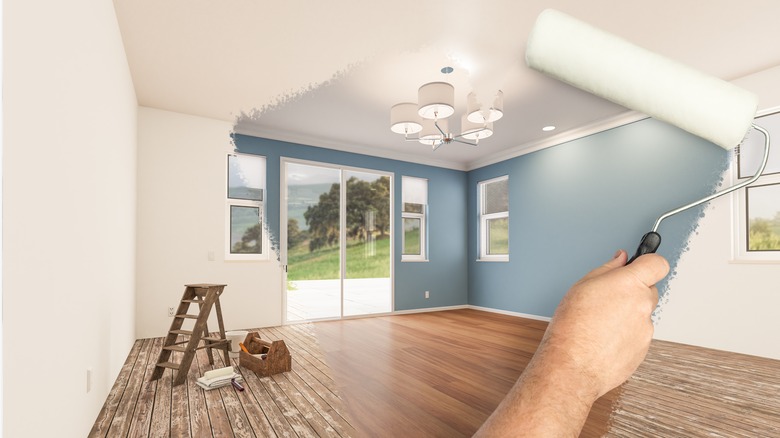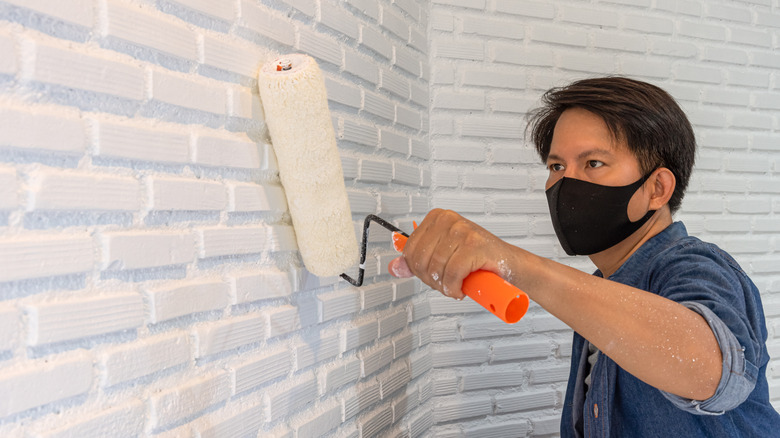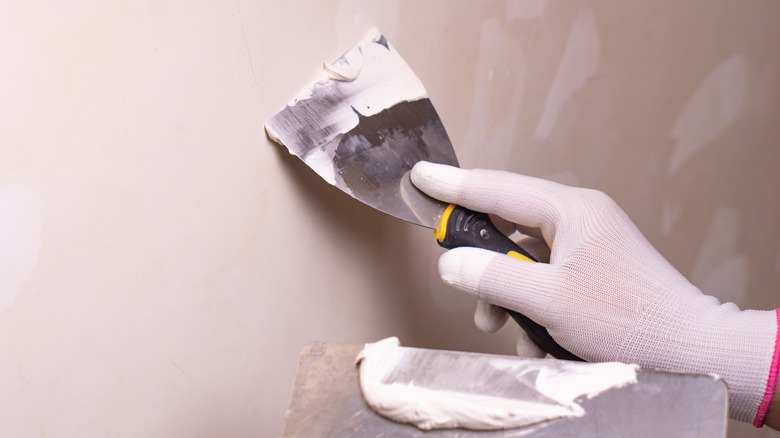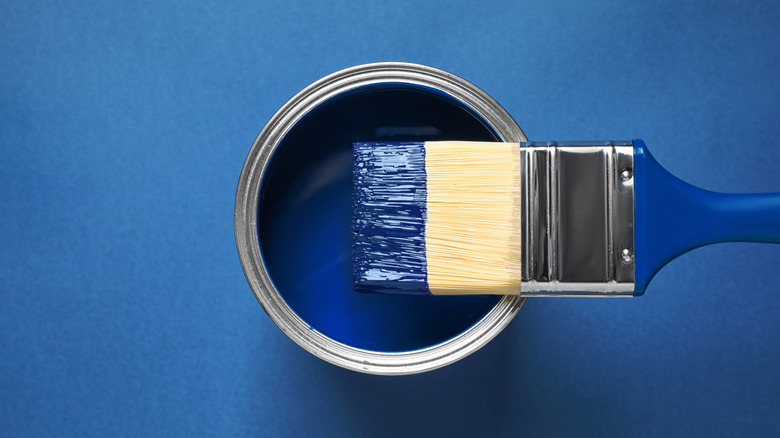5 Things To Consider Before Hiring A Painter
Hiring a painter to complete your home transformation is a good option for just about any homeowner. The job need to be done on a consistent basis in order to keep a fresh aesthetic throughout the house; this goes for both the interior of the property and the external walls. However, it's important to note that painting is one of the easiest renovation projects that you can tackle on your own (via U.S. News & World Report). As a result, purchasing supplies and doing the job yourself is a great way to save on the expense of a professional painter. With this being said, experts remain an important segment of the professional remodeling service industry.
Truthfully, there is often no right answer when it comes to painting your home yourself or hiring a pro to perform the task. Similarly, selecting a painter from the network of professionals in your area can be difficult. Still, most painters will do an honest job and perform their responsibilities quickly and accurately. While it can be difficult to pin down the best approach to repainting your home, these five considerations can help you make a more informed decision when it comes to instituting a much-needed refresh for your property.
1. Consider your ability to tackle the job yourself
The first thing you should do when thinking about hiring a painter is to consider your own ability to perform this job. Painting is not very difficult in the grand scheme of things, but certain aspects of your home or your health can make this task much simpler or far more difficult. For example, some properties incorporate high ceilings, challenging corners, or significant edge work to fit around windows and doors. Fine Homebuilding also reports that exterior painting projects demand ample time to accommodate tricky window edges, and the same can be said for indoor components. In addition, the more labor-intensive your painting task will be, the more likely it is that you should hire a professional to get the job done instead of tackling it yourself.
Similarly, older adults or those who have never painted a room before (perhaps a first-time homeowner) might lack the confidence to efficiently perform this renovation. If you are worried about completing the job in a way that will make your place shine, then you should likely hire a professional. Once again, there is no right way to paint your house, and the approach to this task will be different for every single homeowner. Looking inward to understand your capacity to paint and evaluate any limitations that might prevent you from finishing the job will help you make this selection more confident.
2. Estimate timelines for completion
Another thing that is dramatically different between a DIY paint job and one conducted by a professional painter is the timeline for completion. According to Home Painters, professionals can often finish a whole home in about a week and depending on the job parameters, they may be able to paint the entire house even faster. In contrast, homeowners often tackle DIY painting in bursts. This task must the undertaken with free time on the weekends or in the evenings after the workday has concluded. This makes DIY painting a much longer process, and coupled with the lack of experience that a homeowner will likely bring to the table, several factors slow down the job.
Evaluating the amount of time you're willing to spend on this project can help dictate whether the right approach for your home and daily routine involves a professional or the DIY option. Similarly, because DIY painting will take place during your off time (rather than replacing a part of your work and social routine), it's worth thinking about whether you want to commit to this in your only free time.
3. Understand the nuances of the painting job
Evaluating the nuances of your specific painting task can also help guide you to the right decision when hiring a painter, comparing quotes, or opting for a DIY approach. This means thinking about the general size of the project, any stylistic elements you hope to bring to bear (for instance, with striping, accent wall creation, or a change to the texture of any newly painted surface), and other features of the job. The more in-depth your painting task is, the more value a professional painting service can provide.
Professionals are more than capable of tackling any kind of unique elements that may be present in your property. As well, an expert painter can give you guidance or advice on the best way to implement any type of accent features that you may be thinking of bringing into the style of your new paint job. Again, leaning on the experience of a professional can be immensely helpful, so it's important to consider this option no matter what your unique circumstances look like.
Finally, there is a stark difference in interior and exterior painting (via PaintTopics). Interior painting is done in a controlled environment and doesn't require any consideration regarding the weather, temperature, wind, or debris. Therefore, relying on a professional whenever you want to paint outside your home may be beneficial.
4. Repair damaged walls yourself to save on the expense
Another feature that homeowners must check into consideration is the extent of any damage to their walls. Damaged segments can slow down the painting process and add to the expense whether you've hired a professional or are working on this task yourself. Cracks, screw and nail holes, dents, and any other imperfections in the wall should be fixed before applying a new coat of paint (via Stucco Italiano). This will help create a uniform coloration to the wall, whereas covering the damage with pigment will simply serve to highlight its existence. No matter what kind of spoil you see along your home's walls, it's often a good idea to tackle these repair works yourself rather than leaving them to the painter.
Repairing damaged drywall segments is a simple task, even for larger holes or dents. Making use of spackle and a straight-edged tool is all that's required to fill in the seams left by a careless children's game, hanging picture frames, or even just the typical signs of an aging home. Spackle is cheap and easy to use, and taking this step can save you money later when it comes time to hire a professional painter or when painting the home yourself.
5. Test for lead if your paint is old
An old home may contain fragments of lead paint left over from the initial construction phase. Criterion Laboratories notes that the federal government banned lead-based paints in 1978, but homes built before this almost certainly used this common paint solution. Today, lead-based paint isn't necessarily a health risk, but it can rise to that level if it is chipped or exists in a state that must be sand it down before new coats can be applied.
Aerosolizing fragments of lead in the paint should be avoided at all costs, even as stable surfaces might not rise to the level of significant hazard. Similarly, any segment of the home that a young child might bite or lick should never allow for lead-based paint to continue existing on its surface. If your home is old enough to have been painted initially with this type of mixture, then testing for lead might be a good idea.
If you find lead mixed in with the paint on your home surfaces, hiring a professional outfit to safely remove it before applying a new coat might be the best course of action. This practice will ensure that this potentially toxic and easy-to-overlook feature cannot harm anyone living in or visiting your home.





